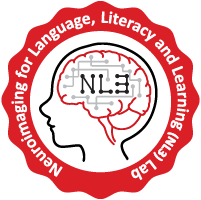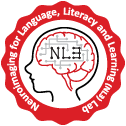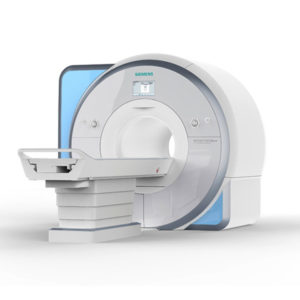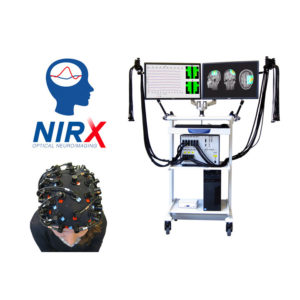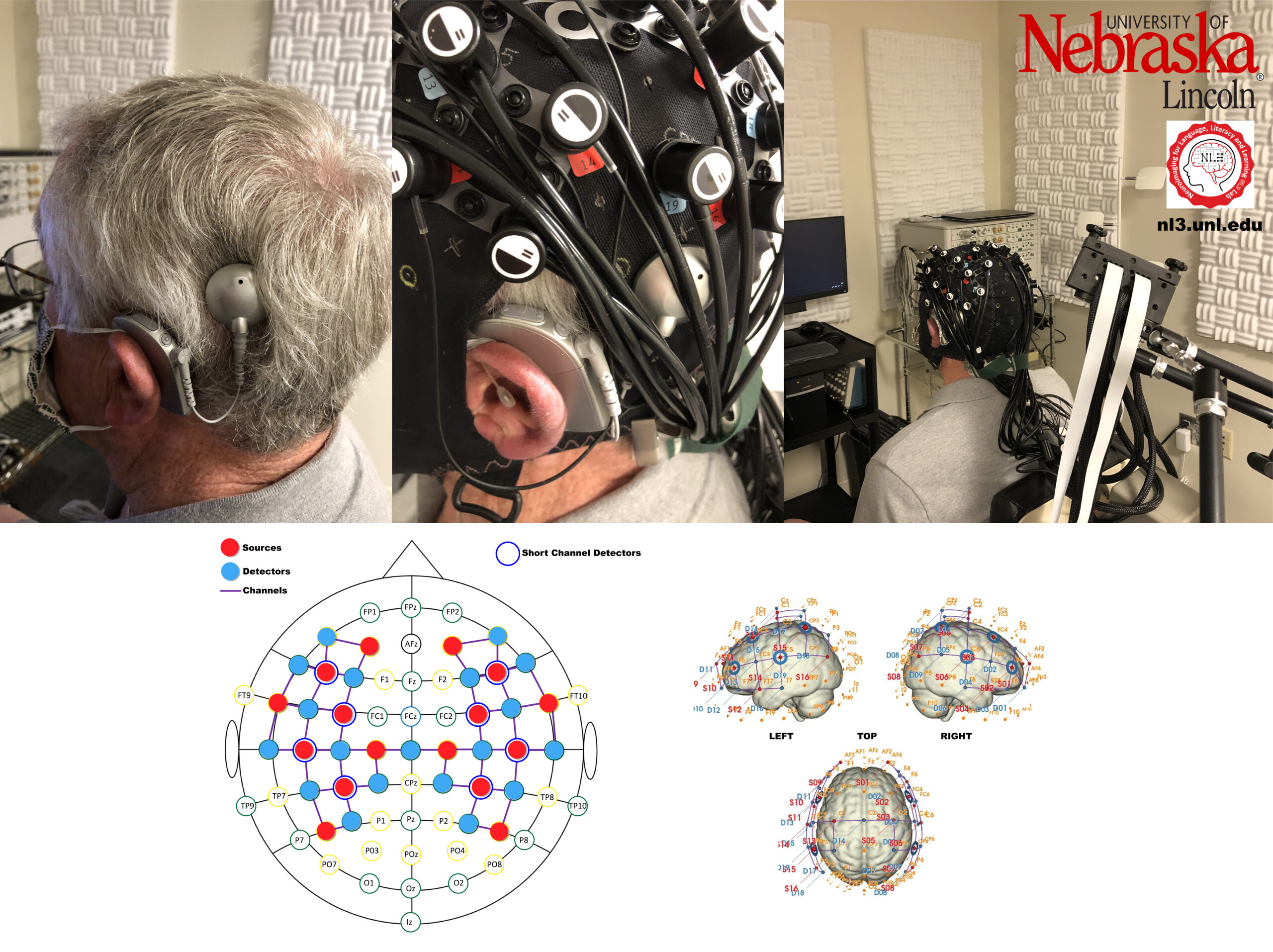
Brain Activation of Cochlear Implant Candidates (B.A.C.I.C.)
Project Number: 1R21DC018110, Official Name: NEURAL PREDICTORS OF SPEECH PERCEPTION OUTCOMES IN ADULTS WITH COCHLEAR IMPLANTS
PROJECT SUMMARY/ABSTRACT: Cochlear implants (CIs) have benefited more than 324,200 individuals worldwide who are deaf or severely hard of hearing since 1984. Although CIs can significantly improve auditory speech perception, leading to better quality of life for severe-to-profoundly deaf individuals, the success rate is highly variable and speech perception outcomes (SPOs) differ widely across CI users. Many factors can contribute to this wide variability, such as age of implantation, duration of deafness, level of preoperative usable residual hearing, pre-CI hearing aid use, and the design of CI electrodes. However, these factors explain only about 10-20% of the variance. Therefore, a large portion of the variance in post-surgical SPOs remains unclear and unpredictable, leading to great difficulty in determining who will benefit from a CI. The goal of this project is to identify the brain-based factors that determine the variability in SPOs in order to characterize the factors leading to successful SPOs. Functional magnetic resonance imaging (fMRI) and functional near-infrared spectroscopy (fNIRS) will be used to measure brain activity, and diffusion weighted imaging (DWI) will be used to measure white matter integrity prior to implantation; these measures will be contrasted with a group of normal hearing controls. After implantation, only fNIRS (which is fully compatible with a CI) will be used to measure changes in activity together with changes in speech perception at three- and six-month follow-up visits after the activation of the CI. The central hypothesis, formulated on the promising predictive powers of brain-based measures, is that pre-surgical neural markers predict SPOs following implantation. If this hypothesis is correct, pre-surgical brain imaging scans might be introduced in the evaluation process of CI candidacy. The long-term goal is to implement an imaging-guided process to determine pre-surgical CI candidacy and assist in post-surgical aural rehabilitation. The specific aims are to: 1) identify differences in activity and white matter integrity between adults with post-lingual sensorineural hearing loss (SNHL) and age- and gender-matched normal hearing controls; 2) determine neural markers that predict SPOs; and 3) identify changes in brain activity, specifically cross-modal reorganization in the post-lingual SNHL group, following implantation. By achieving these aims, the PI will gather data essential to developing a treatment protocol that involves brain imaging data to best guide clinical practices in adults and children, which will be proposed in a subsequent R01. Ultimately, the results of this research will reveal those neural factors important in predicting better SPOs in CI users and will lead to improved prognosis. The knowledge gained from this work will also shed light on opposing theoretical frameworks that account for the relationship between functional changes and SPOs in CI users. The foundational information established under this award will provide the framework for future research proposals aiming to collect imaging data in CI candidates for all ages in clinical practices. This study directly addresses Priority Areas 2 and 3 in Hearing and Balance Research of the latest NIDCD Strategic Plan.
PROJECT NARRATIVE: Although cochlear implants (CIs) can significantly improve auditory speech perception, their success rate is highly variable across CI users. The proposed project will identify pre-surgical neural and behavioral measures that predict post-surgical CI outcomes and elucidate how brain reorganization occurs before and after implantation, which will ultimately support better post-surgical planning and the optimization of aural rehabilitation plans for CI candidates.
PROJECT NARRATIVE:
- Poster presentation: Wang Y., Bollinger J., Secilmis L., Hughes M., Dai H., (2023). White-matter Microstructure Differences Between Cochlear Implant Candidates and Their Hearing Peers: A Pilot Diffusion Tensor Imaging Study, 2023 Conference on Implantable Auditory Prostheses, Lake Tahoe, CA. [Poster] (poster – hyperlink to the PDF file called 2023_CIAP_Wang_48_40_v3_4print_v2.pdf in [PDF]
- Poster presentation: Wang Y., Secilmis L., Bollinger J., Wu Y., (2022). Short-term Changes of Speech-evoked Brain Connectivity in Adults, FNIRS 2022 conference, Boston, MA. [Poster] (poster – hyperlink to the PDF file called PS2_43_195_YW.pdf in [PDF])
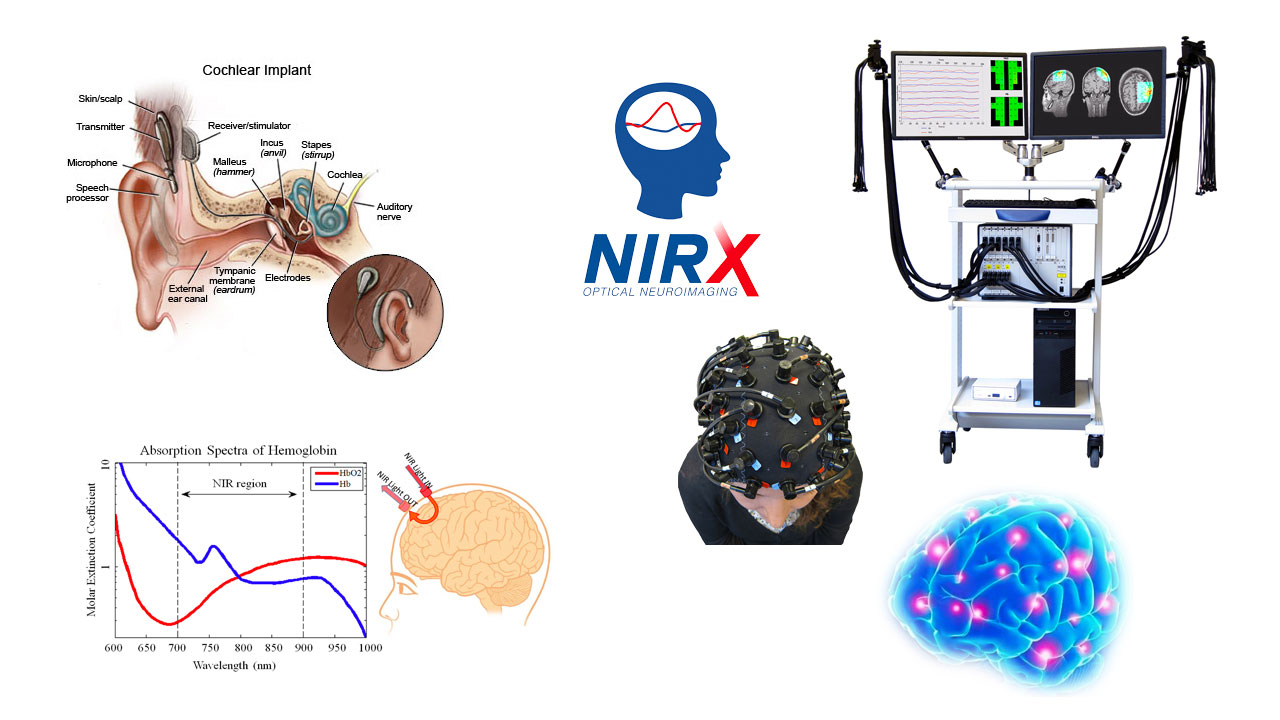
PROJECT B.A.C.I.U.
Brain Activation of Cochlear Implant Users (B.A.C.I.U.)
PROJECT SUMMARY/ABSTRACT: Cochlear implants (CIs) have benefited more than 324,200 individuals worldwide who are deaf or severely hard of hearing since 1984. Although CIs can significantly improve auditory speech perception, leading to a better quality of life for severe-to-profoundly deaf individuals, speech perception abilities differ widely across CI users. Many factors can contribute to this wide variability, such as the age of implantation, duration of deafness, level of preoperative usable residual hearing, pre-CI hearing aid use, and the design of CI electrodes. However, these factors explain only about 10-20% of the variance. Therefore, a large portion of the individual differences in speech perception abilities remains unclear. The goal of this project is to identify the neural bases of speech perception in CI users to understand individual differences in speech perception abilities better. Our findings can improve individualized auditory rehabilitation program after CI surgery to gain the best outcomes in understanding speech. Functional near-infrared spectroscopy (fNIRS) (which is fully compatible with a CI device) will be used to measure changes in brain activity.
PRODUCTS:
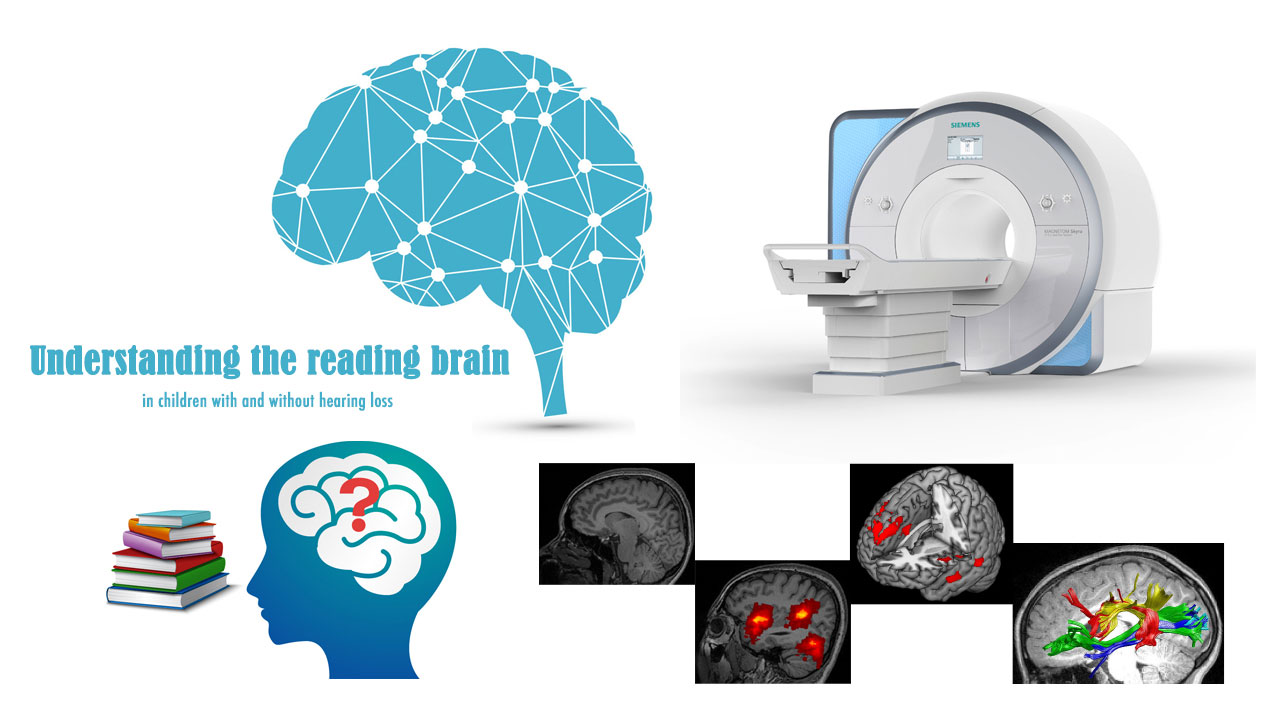
PROJECT B.I.R.D.
Brain Imaging of Reading Development (B.I.R.D.)
Official Name: IDENTIFYING READING NETWORKS IN THE BRAIN OF TYPICAL DEVELOPING CHILDREN AND HEARING-IMPAIRED CHILDREN
PROJECT SUMMARY/ABSTRACT: The reading ability of the vast majority of children with hearing loss remains behind their typical hearing peers, negatively affecting their education, employment, and socio-emotional development. This project aims to identify the unique and comprehensive neural and behavioral profiles of young children with hearing loss during reading development in order to uncover the core auditory and neurocognitive factors that impede or facilitate reading outcomes, thereby contributing to the development of novel reading strategies or early intervention programs for children with hearing loss. This project includes both a longitudinal design and a cross-sectional design. We will follow one group of children longitudinally from pre-kindergarten or kindergarten children annually until they become efficient readers. We will also study children from 6 – 17 years old to understand how brain activity related to their differences in reading skills. This project is supported by start-up funds and internal awards.
PRODUCTS:
-
- Peer-reviewed paper: Mathur, A., Schultz, D., Wang, Y. (2020). Neural bases of phonological and semantic processing in early childhood. Brain Connectivity [Epub Ahead of Print], DOI: 10.1089/brain.2019.0728, [PDF], JIF: 3.82
- Poster presentation: Wang Y., Mathur, A., White matter pathways supporting basic reading skills in young children, Cognitive Neuroscience Society (CNS) 2020 Virtual Conference, May 2020, [Poster F53 PDF]
- Poster presentation: Mathur, A., Schultz, D., Wang, Y., Specialization of phonological and semantic reading routes in early childhood, Great Plains IDeA-CTR Annual Meeting, Omaha, NE, October 2019, [PDF]
- Poster presentation: Grybas, E.A., Nguyen, L., Trat Thai, T.T.K., Mathur, A., Wang, Y., White Matter Characteristics in Pre-Preaders, University of Nebraska-Lincoln, Spring Research Fair, Lincoln, NE, April 2019, [PDF]
- Poster presentation: Mathur, A., Sibaii, F., Wang, Y., Neural specialization of reading in young children, Cognitive Neuroscience Society (CNS), San Francisco, March 2019, [PDF]
- Outreach Activities – Oral presentation: Wang, Y., Neural Pathways Supporting Reading Development in Children Who Are Deaf/Hard Of Hearing, University of Nebraska-Omaha, The Deafness, Cognition and Language Research Centre, University College London, London, U.K., June 2019, [PDF].
- Outreach Activities – Oral presentation: Wang, Y., Understanding the Reading Brain – advocating Brain Research for children who are deaf/hard of hearing, Library Event, Southeast Nebraska Regional Program for Students Who are Deaf or Hard of Hearing, May 2019.

PROJECT P.I.E
Parent-child Interaction on Emotion (P.I.E)
Official Name: IDENTIFYING THE ROLE OF PARENT-CHILD INTERACTION ON EMOTIONAL REGULATION
PROJECT SUMMARY/ABSTRACT: Some children with Autism Spectrum Disorder (ASD) have significant social communication impairments that interfere with everyday life skills. Emotional regulation is a crucial aspect of social functioning frequently impaired in children with ASD, leading to difficulties in managing emotions, social interactions, and daily functioning. Emotional regulation involves monitoring, evaluating, and adjusting one’s emotional state to achieve a goal. In typically developing (TD) children, poor emotional regulation has been associated with poorer academic achievement, lower language and executive functioning, and a higher risk of developing behavior problems. However, there is limited research on the specific aspects of parent-child interaction that contribute to emotional regulation in children with ASD. Therefore, the aim of this study is to investigate the role of parent-child interaction during free play on emotional regulation in autistic children and the TD comparison group by collecting physiological responses (heart rate from both parent and child and brain responses from the parent only).
INTERESTED?
Please choose any of the three following contacting methods to reach us if you are interested in participating or have any questions.
(1) Email: nl3wanglab@gmail.com; (2) Phone: 402-472-0106; (3) Fill in this online form. Thank you very much.
FACILITIES – MRI
Siemens MAGNETOM Skyra, as the top-of-the-line 70 cm 3T scanner, offers various technological features, aiding you in obtaining excellent image quality and transforming your 3T productivity.
FACILITIES – FNIRS
NIRScout S Core System Unit equipped with 16 x 2-wavelength LED source leads, 5 x Avalanche Photodiode (APD) detector cards, and 8-source active source bundle for fiberless optical illumination with dual tip, a bundle of 4 x detector fibers with dual tip, and 8 x NIRScaps (sizes: 50, 52, 54, 56, 58, 60, 62, 64 cm).
FACILITIES – Mock Scanner
A child-friendly room equipped with MRI Simulator from Psychology Software Tools (Model 100355) is available for young participants.
